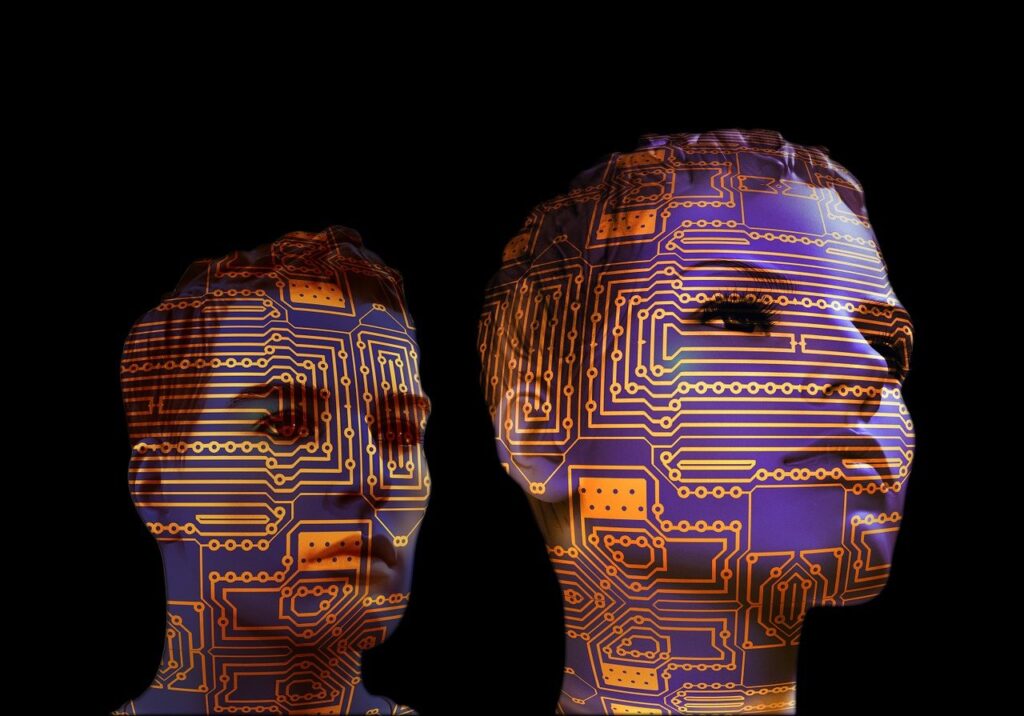Artificial Intelligence (AI) is transforming industries, from healthcare to finance, by leveraging intelligent agents to perform tasks that would otherwise require human intervention. These AI agents vary in terms of capabilities, complexity, and how they interact with the environment. Understanding the different types of AI agents can help organizations and individuals make informed decisions about which type is best suited for their needs.
Depending on the complexity and functionality, these agents can be classified into several categories. Let’s explore the different types of AI agents and their applications.
1. Simple Reflex Agents
Definition: Simple reflex agents are the most basic type of AI agents. They respond to specific stimuli with predefined actions based on a set of rules. These agents don’t consider past experiences or future consequences when making decisions.
Example:
- Thermostats: A traditional thermostat is a simple reflex agent that reacts to changes in temperature. If the temperature drops below a certain level, the heating system is activated, and if it exceeds a set threshold, the heating is turned off.
Use Cases:
- Automatic lighting systems that turn on/off based on the presence of movement.
- Basic chatbots that respond with pre-programmed answers to frequently asked questions.
2. Model-based Reflex Agents
Definition: Model-based reflex agents extend simple reflex agents by maintaining an internal model of the world. This allows them to consider the current state and make decisions based on both the environment and internal states.
Example:
- Robotic Vacuum Cleaners (e.g., Roomba): These robots use sensors to navigate a room while building an internal map of the environment. They adjust their cleaning path depending on obstacles and previous movements, making the process more efficient.
Use Cases:
- Autonomous vehicles that rely on sensors and models to navigate safely.
- Smart home systems that learn user preferences and adjust settings accordingly.
3. Goal-based Agents
Definition: Goal-based agents are more advanced than reflex agents. These agents have specific objectives they aim to achieve, and they evaluate different actions based on how likely they are to help them reach their goals.
Example:
- Chess-playing AI (e.g., AlphaZero): This AI evaluates the current game board and plans its moves based on the goal of winning the game. It considers a wide range of potential future moves and their consequences before making a decision.
Use Cases:
- Recommendation systems (e.g., Netflix, Amazon) that suggest products or movies based on user preferences.
- AI in healthcare that makes treatment recommendations based on patient data and health goals.
4. Utility-based Agents
Definition: Utility-based agents are designed to maximize their satisfaction or utility based on a set of preferences or goals. Unlike goal-based agents that focus on achieving a specific objective, utility-based agents aim to achieve the most beneficial outcome by evaluating different options in terms of utility.
Example:
- Financial Trading Bots: These AI systems predict stock market trends and make trades based on maximizing profit. They consider a variety of factors like market data, risk tolerance, and historical trends to make decisions that optimize returns.
Use Cases:
- Autonomous drones that perform delivery tasks and optimize flight paths to reduce energy consumption and delivery time.
- Personal assistants that help users optimize daily tasks (e.g., calendar management, transportation routes).
5. Learning Agents
Definition: Learning agents improve their performance over time by learning from past experiences. These agents use feedback to adapt and modify their behavior, making them highly efficient in dynamic environments where pre-programmed rules are insufficient.
Example:
- Self-driving cars: These vehicles continuously learn from the environment, traffic patterns, and driving conditions to improve their driving decisions. They use machine learning algorithms to process data from cameras, radar, and lidar to make better decisions over time.
Use Cases:
- Virtual personal assistants like Google Assistant and Siri, which continuously improve their responses and actions based on user interactions.
- AI in gaming that adapts to the player’s strategy and evolves to provide a more challenging experience.
6. Autonomous Agents
Definition: Autonomous agents can operate independently in an environment without human intervention. They are capable of making decisions, performing tasks, and achieving goals autonomously, often using machine learning or deep learning techniques.
Example:
- Autonomous Delivery Drones: Companies like Amazon use autonomous drones to deliver packages. These drones navigate, avoid obstacles, and ensure packages reach the correct destination without human involvement.
Use Cases:
- Robots used in warehouse automation that move items and manage inventory without direct human control.
- AI in agriculture, such as autonomous tractors or harvesters, that perform tasks based on real-time data from sensors and GPS.
The world of AI is vast and evolving, with different types of AI agents suited to varying tasks and challenges. From simple reflex agents to autonomous systems, each type of agent has its own unique features and applications. Understanding these types is crucial for selecting the right AI solution, whether you’re automating home systems, improving customer service, or developing cutting-edge technology like self-driving cars.
By exploring the various types of AI agents and their examples, you can better appreciate how AI is integrated into our daily lives and the growing potential it has to shape the future.
